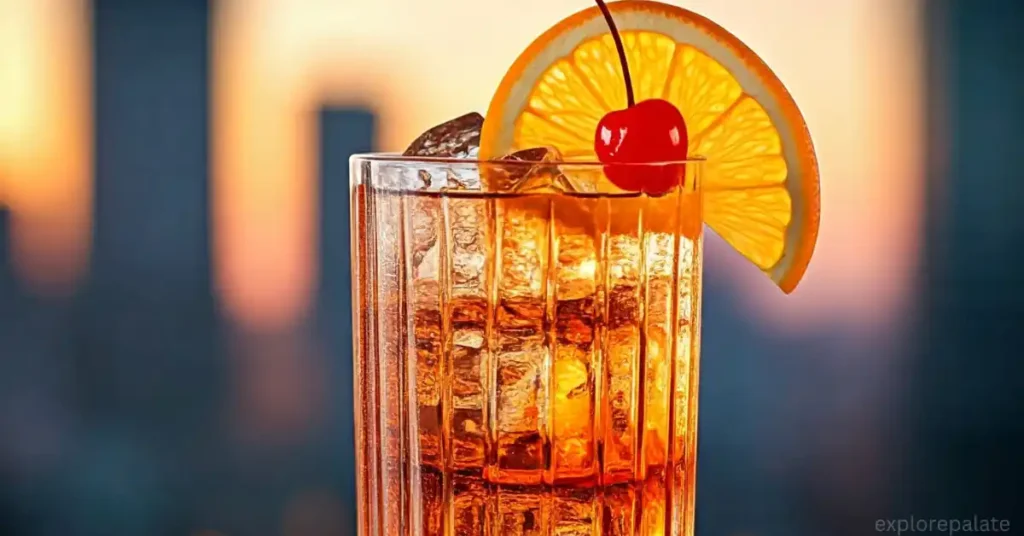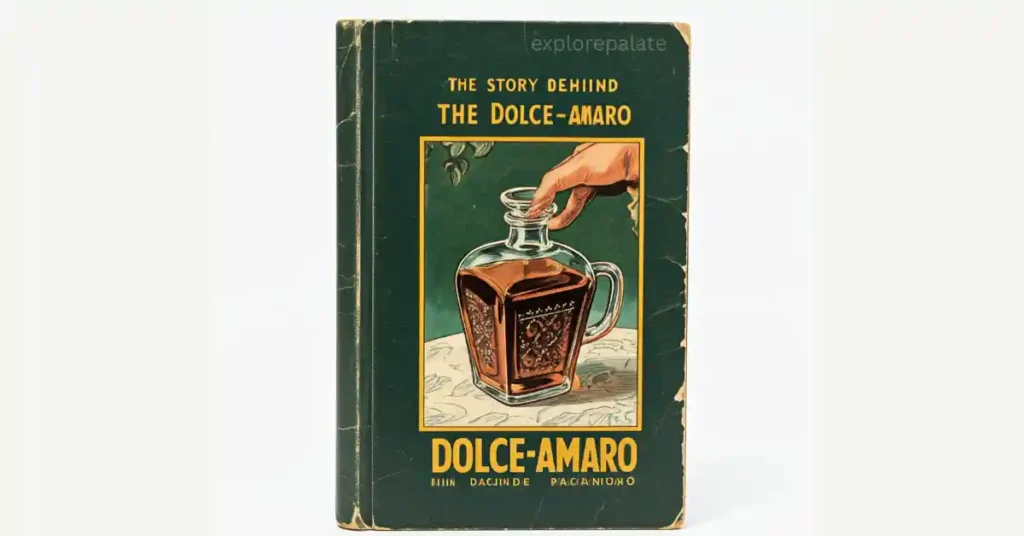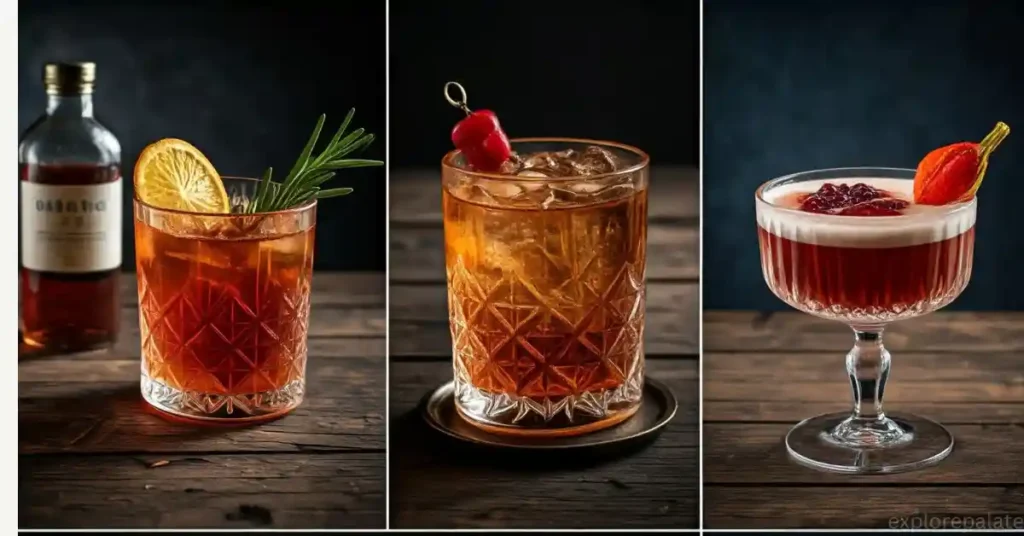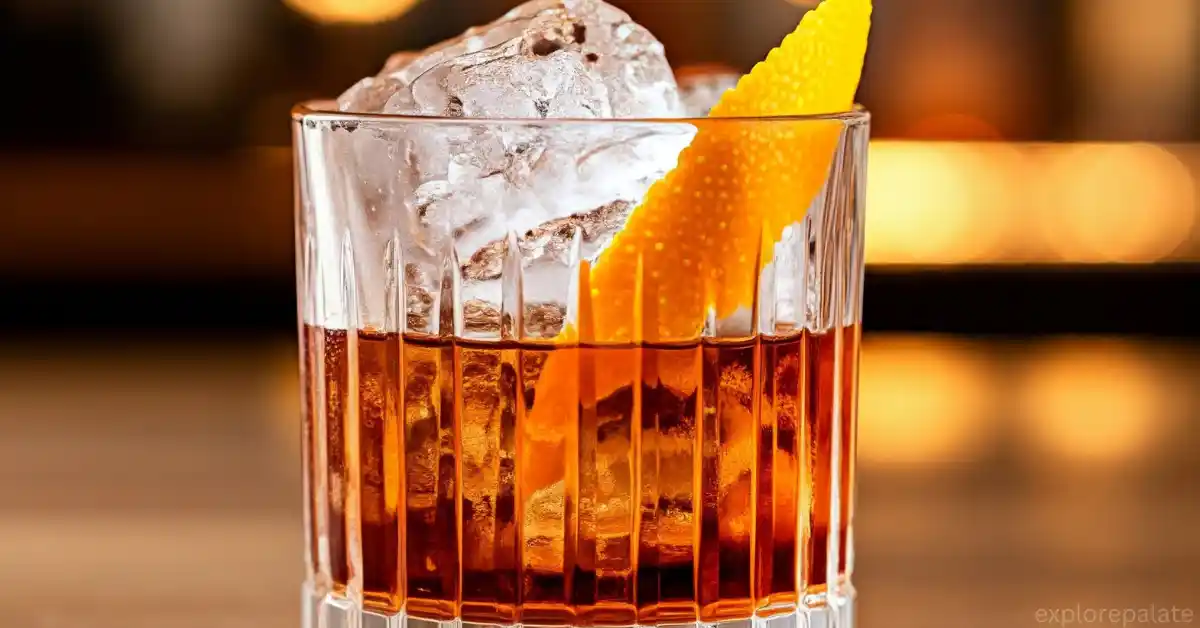In the realm of mixology, where flavors tango and often collide, the Dolce-Amaro stands alone as a work of balanced artistry and nuanced sophistication. This splendid beverage, a melodic fusion of sugary bliss and biting tang, presents a truly singular elixir for the senses.
Come, let us dive deep into the craft of shaping the unparalleled Dolce-Amaro, investigating its disparate elements, specialized approaches, and the inspiration for its innovative birth. Along our journey, we’ll encounter both short quips and lengthy discourses matched only by the elegant complexities found within the final, finished product.
Ingredients

The Dolce-Amaro cocktail evokes a marriage of dichotomies, as its Italian translation suggests – “sweet” and “bitter” coexisting in harmony. Crafting this sophisticated elixir requires selecting elements that bring both complexity and completeness.
- First, a velvety sweet vermouth is chosen, an aged fortified wine offering an opulent foundation upon which other flavors may unfold in an intricate fashion. Next, the bracing bite of Campari, a crimson liqueur bursting with citrus notes, is added to add layers of dimension and liveliness.
- For earthier depths, Cynar joins the medley. Derived from artichokes, its bittersweet tones meld into the composition in an unusual yet complementary manner. To highlight citrusy highlights and tie the assortment together, a few drops of orange bitters are included, their intense essence accentuating what came before.
- Finally, a twist of orange peel lends its fresh aroma as a garnish, a subtle flourish finishing this harmonious union of tastes both pleasingly bitter and sweetly satisfying. With care taken in sourcing just the right balance of ingredients, the craft of the Dolce-Amaro is revealed as an artful mingling of opposites into a greater whole.
Preparation

- Chill the Glass: For optimal enjoyment, place a rock glass in the freezer for a few moments before assembly.
- Combine Ingredients: In a mixing vessel, combine equal parts Sweet Vermouth, Campari, and Cynar with vigor.
- Add Bitters: Orange bitters are stirred generously to highlight citrus accents.
- Add Ice: Fill the mixing vessel with ice crystals and mix vigorously for half a minute to chill the ingredients and slightly dilute the mixture.
- Strain and Serve: Filter the beverage into the chilled rocks glass.
- Garnish: Express an orange twist over the serve to impart fragrant oils, allowing it to float gracefully.
The Story Behind the Dolce-Amaro

The Dolce-Amaro drink is a relatively youthful creation, conceived from innovative mixology minds. Its roots trace to a desire to probe the interplay between sweet and bitter profiles, crafting a libation sophisticated yet approachable. The union of Sweet Vermouth, Campari, and Cynar offers a unique balance of sugary, bitter, and herbaceous
Variations and Transformations

While the traditional Dolce-Amaro recipe creates a harmonious balance, opportunities exist to personalize it. Here are a few possibilities:
- For a More Intense Experience: Increase the proportion of Campari and Cynar for a bolder flavor.
- Towards Greater Indulgence: Inject a modest sum of simple syrup or agave nectar for a sweeter treat.
- Novel Bitter Explorations: Experiment with diverse bitters like Angostura or Peychaud’s to uncover fresh profiles.
- Alternative Liqueur Transformations: Substitute comparable liqueurs such as Cocchi Americano or Aperol for Sweet Vermouth, Campari, and Cynar.
Pairing Nourishment with the Dolce-Amaro

The multifaceted Dolce-Amaro nicely complements an array of fare. Consider these matches:
- Appetizers: Charcuterie, olives, marinated mushrooms, or a delicate salad.
- Main Courses: Grilled or roasted meats like lamb duck or seafood in opulent sauces.
- Cheese: Creamy varieties such as brie or camembert or complex aged varieties.
- Sweets: Chocolate-centric delights like cake or brownies or fruit-based desserts like a tart or sorbet.
Conclusion
The Dolce-Amaro cocktail exemplifies the culinary craft of mixology, accentuating the importance of deliberately choosing components and deft preparation. Its well-balanced fusion of sugary and tart tastes, alongside the delicate scents of orange bitters, renders it an extraordinarily remarkable beverage.
Whether a practiced aficionado of alcoholic libations or just exploring novel flavors, the Dolce-Amaro is an indispensable trial that will leave one longing for additional samples of its intricate harmony. Likewise, its complex yet balanced profile provokes further analysis of the artful interplay of its elements.
FAQs
Is Amaro in Negroni?
While amaro lends itself perfectly to after-dinner sipping, it also mixes beautifully into classic cocktails. Take the legendary Negroni for example – that boozy beverage is simply the perfect balance of bitter herbal amaro, aromatic vermouth, and robust gin.
What pairs with Amaro?
Chocolate and Amaro share an unexpected yet sublime partnership. Their bitter profiles commingle in heavenly harmony, each bringing out nuanced notes in the other. For the ultimate taste experience, savor a small piece of rich dark chocolate alongside a sip of slightly sweet amaro like Nonino Quintessentia – the contrasting flavors mingle magically on the palate.
Is Amaro a dessert drink?
While amaro’s bitter complexity may not seem like a fit for indulgent sweets, its versatility allows it to transition effortlessly from aperitif to after-dinner pleasure. As a digestive, amaro’s herbal qualities soothe and aid the body after a heavy meal. With its sweet-bitter balance and elevated alcohol level, amaro also stands apart from typical cordials meant for dessert.
Can I use Campari as amaro?
While Campari is a quintessential ingredient in cocktails like Negronis and Americanos, it is technically an aperitivo wine rather than a true amaro. That said, Campari shares amaro’s embracing of bitter botanicals, so it can stand in for lighter-style amari in a pinch when crafting drinks. Just keep in mind its vibrant red hue and lack of age-induced richness.

